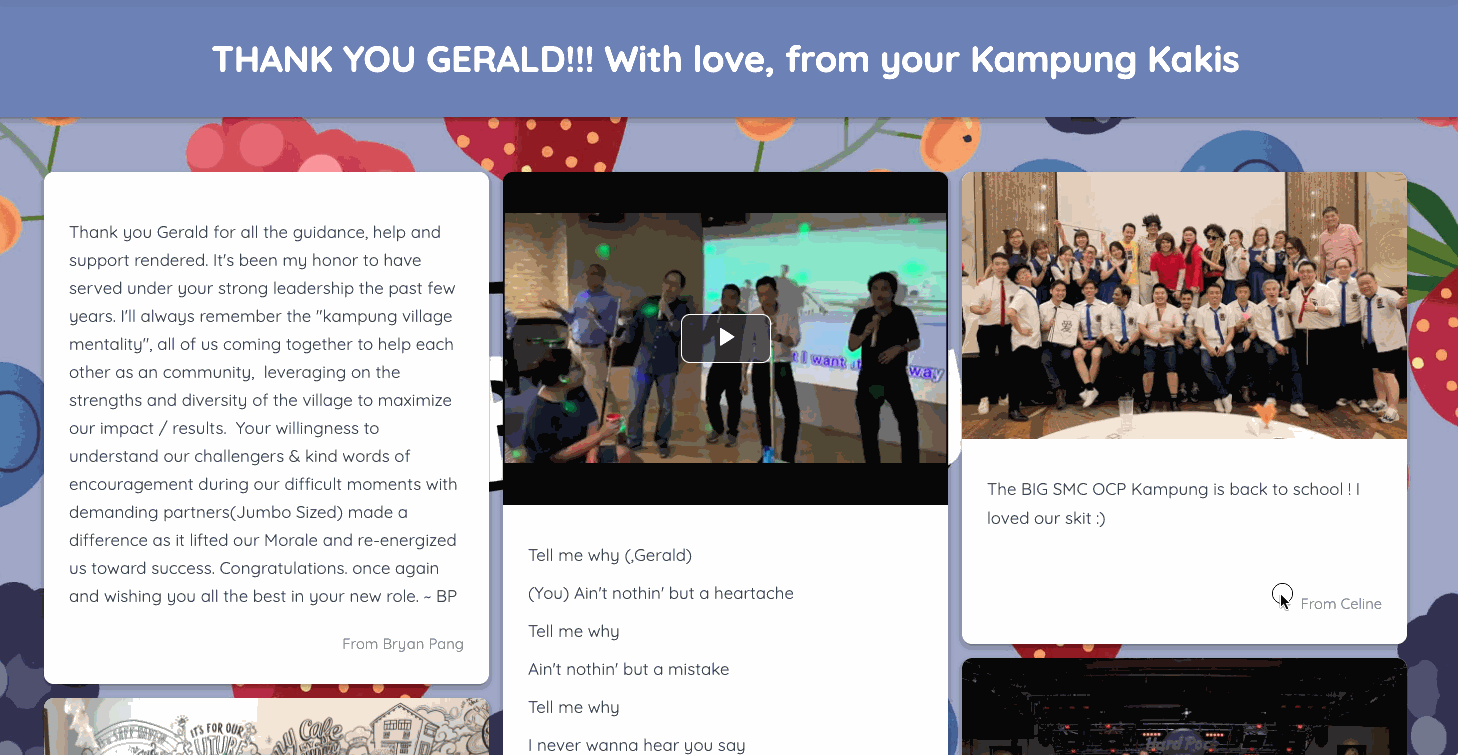Imagine a job where every day feels like a grind with zero acknowledgment of your hard work. Tedious, right? Now, picture the opposite—a workplace where your colleagues, supervisors, and even peers regularly praise and celebrate your contributions. Sounds pretty spectacular, right? Newsflash, that’s employee recognition, and it’s not just the feel-good factor; it can have serious positive impacts on your business.
Done right, it’ll be your new best friend in creating an environment where employees feel valued and engaged. But here’s a common misconception: employee recognition doesn’t need to be a big, grand gesture. Sometimes, a simple ‘thank you’ goes a long way. To get you started, our human resources experts put together this dive deep into employee recognition. We’ll show you what it truly means, explore its many forms, and investigate its transformative power in the workplace. Let’s get started.
What is employee recognition?
Employee recognition is any acknowledgment or appreciation for an employee’s effort, behavior, or accomplishments. Think of it as putting a spotlight on someone who rocks their tasks, puts in extra effort, or has a milestone worth celebrating.
Believe it or not, it can be as simple as a shout out to someone or a casual pat on the back for a job well done. On the other hand, it can also be as complex and formal as employee awards, powerful internal recognition letters, and more.
You’ve probably heard it a million times (and we’ll say it a million more), employee recognition more than just feeling good. It has serious perks. When you recognize your team often, it boosts employee morale and gets them more engaged. They’ll feel seen and appreciated, and in turn, they’ll be happier, work harder, and stick around longer. Basically, positive vibes all around that spread through the whole company, bringing better performance and lower employee turnover rates.
Don’t even get us started on the best part: employee recognition is super flexible. You can celebrate milestones like work anniversaries, give thumbs up for hitting quarterly goals, or make birthdays special. There’s even employee recognition software that makes it even easier to regularly shower your team with appreciation. They fit right into your work routine and help ensure no one’s contributions go unnoticed. Because (of course) employee recognition isn’t just a nice-to-have; it’s a must-have.
What are the different types of employee recognition?

Like everything in the workplace, employee recognition comes in various flavors, each serving a particular purpose and context. You aren’t limited to one method—mixing and matching can have a lasting impact (and is a best practice). Here’s a list of different types:
Peer-to-peer recognition
This very common (and valuable) recognition type is when employees acknowledge the efforts of their colleagues. This form strengthens team bonds and creates a collaborative culture of recognition. From employees shouting out peers in a company-wide forum to everyone gathering for a celebration, this type of recognition is far reaching.
Managerial or top-down recognition
A more formal example, this form of recognition comes from supervisors or managers. Its biggest value is its power to boost employee confidence and reaffirm that they’re on the right path. Managerial recognition can be as simple as a personal thank-you note or as grand as a formal recognition in a team meeting.
Bottom-up recognition
Managers need love too, so this form of recognition is when employees shout out their supervisors. It builds connections internally, promotes equality in the workplace, and makes sure that no one deserving feels left out.
Public recognition
This type refers to acknowledging achievements in a public setting, such as during company meetings or on a digital company bulletin board. It can be either peer to peer to managerial. Public recognition not only elevates the employee (huzzah) but also sets an exemplary tone for others.
Private recognition
This form of recognition is a little more personal. It can be a passed note or a one-on-one conversation providing a more intimate acknowledgment. Whether from a boss or a peer, employees appreciate the one-on-one approach, where they can discuss their performance and feelings.
Formal recognition
If you prefer pomp and circumstance, these more formal programs live in the corporate hierarchy. These are structured programs like “Employee of the Month,” service awards, or official ceremonies. They often come with tangible employee rewards like plaques, bonuses (hooray), or certificates, offering a lasting form of recognition.
Informal recognition

Everyone loves going business casual, and this type involves more laid back recognition. From casual praise during day-to-day interactions like saying “great job” to sending an appreciative email, these small gestures add up—often having big impacts.
Performance-based recognition
A classic type of recognition, this form celebrates high performers and those who consistently go above and beyond. Whether merit-based awards or bonuses, this recognition frequently comes with some kind of dollar sign attached (although it doesn’t necessarily have to).
Social recognition
Similar to public recognition, this recognition involves using social media or internal social platforms to celebrate employee achievements and milestones. Usually a post or video, this recognition gets a business’ larger community to join in and celebrate accomplishments.
How does employee recognition benefit organizations?
We’ve said it before and we’ll say it again, employee recognition does more than make people feel good; it has tangible benefits that create a ripple effect throughout the organization. With a solid recognition program in place, businesses can unlock employee potential that’ll take them to new heights.
But let’s not get ahead of ourselves; first, let’s explore these benefits. Employee recognition benefits organizations by:
Improving Productivity
Recognized employees usually work harder and smarter, boosting overall productivity. This means more story points completed, tasks moving to the finish faster, and better workflows. When efforts get acknowledged, people are motivated to keep pushing the boundaries and employee performance improves.
Increasing Employee Retention Rates
Employees who feel valued are less likely to leave (it doesn’t take an HR expert to know that). Recognition helps create a more positive employee experience, reducing regrettable turnover and the costs associated with recruiting and training new staff (plus talent management).
Enhancing Company Culture
Recognizing employees creates a more inclusive, supportive, and engaging work environment. Any positive recognition efforts contribute significantly to a company’s culture and play into core values.
Boosting Job Satisfaction
When recognition rises, so does overall job satisfaction. If staff members feel noticed and appreciated, they’ll report greater levels of employee happiness. Satisfied employees are more likely to evangelize their company as a great place to work.
Improving the Employee Experience
Regular recognition improves the overall employee experience. A positive employee experience is tied to plenty of great business outcomes, like customer service results and success metrics (believe it or not, employee experience affects the customer experience).
Increasing Employee Motivation
No one can draw from a proverbial “empty bucket,” so continual recognition acts as an ongoing source of motivation for employees. It’s the fuel they need to keep their engines running at full speed, efficiently.
Reducing Costly Errors
Appreciated and motivated employees tend to be more attentive and focused on their work. Regular shout outs and support can reduce the attitudes that lead to costly mistakes.
Who should give employee recognition?

Recognition should come from all directions—top-down, bottom-up, diagonal, inside out, horizontal, vertical, and sideways (okay, maybe not all of those). The more diverse your sources of recognition are, the more impactful and beneficial it is for your business.
When we say anyone can give employee recognition, we mean anyone and everyone. From the night janitor to the CEO, appreciation is a group effort from everyone on staff. Some common sources of employee recognition are:
Managers and Supervisors
A good boss should be giving consistent positive feedback, but they should also be celebrating and engaging as well. Formally and informally, managers can celebrate milestones, recognize hard work in meetings, and provide performance awards.
Coworkers and Other Peers
Whether given from a colleague, coworker, or collaborator, peer recognition builds respect and camaraderie among team members. When people recognize each other, it highlights a culture of gratitude and support.
Executive Leaders
Recognition from higher-ups can significantly uplift staff members, boosting employee morale and motivating them to continue their excellent work. When a high level c-suite or VP leader recognizes an individual contributor, it can be a significant moment in their career.
Self-recognition
Encouraging employees to acknowledge their achievements promotes self-awareness and confidence (okay, hear us out). Sometimes, being able to pat one’s own back is necessary in realizing how far one has come, plus feeds into the larger culture of gratitude that fuels company values.
How much does employee recognition cost?
Adding effective employee recognition ideas doesn’t have to break the bank. At some levels, it can be free, but it’s best implemented with some kind of cost associated. That way, it can appropriately scale to need and use case.
For orgs of all sizes, recognition can range from simple, low-cost gestures to more structured and costly programs and platforms (which also vary in price). These software options provide robust recognition solutions that help human resources with admin work and empower employees with access.
That said, employee recognition costs vary widely depending on an organization’s size and need. But, at its core, there are really two ways to breakdown the cost:
By each recognition:
Again, employee recognition doesn’t have to be expensive, and usually doesn’t cost very much for each shout out or celebration. A quick verbal shout out or an appreciative email can be free, while a small token of appreciation (like a thank-you card) can cost a small fee but offer immense value. For example, a single Kudoboard shout out board can cost as little as $5.99.
Even classic service awards, corporate gifts, or personalized memorabilia don’t necessarily require hefty investments (although they can add up). Larger recognition events require a little more investment, although they can range by scope of gifting.
By recognition platform subscription:

To make recognition accessible and equitable, many organizations now use employee recognition software that offers structured recognition, rewards, points systems, public recognitions, and more. These platforms enable everyone to participate in recognition and make implementation easier at scale.
These platforms come with varying cost structures and prices, but most provide scalable packages suited to varied needs and budgets. Many vary depending on the number of users and the features you require. For most, employee recognition software is a longer-term investment with immense benefits in employee engagement and productivity.
For example, Elevate by Kudoboard is an example of a recognition software built to scale. It’s a fun, interactive, and authentic means to recognize and celebrate your team, as well as fits budget needs of all sizes. A business plan can accommodate unlimited use by a number of users, while a Pro and Enterprise plan offers additional advanced features for bigger teams with more needs.
Recognize your employees today
How do companies create a culture of employee recognition?

Building a recognition culture isn’t a set-it-and-forget-it effort. It requires lots of integration work, consistent enthusiasm (both from you and the team), and periodic reviews. You’ll need executive buy in, budget support, and more.
For small organizations, creating a culture of recognition can be as easy as picking occasions to recognize and providing a place for team shout outs. In addition to informal verbal recognition, you’ll want support items like online cards and/or gifts to recognize the real achievements.
For bigger organizations, an employee recognition program is a necessary part of creating internal culture. These plans are a structured way to regularly appreciate and reward employees for their hard work, dedication, and success. Oftentimes, organizations use employee recognition software to build a culture where appreciation and acknowledgment become a norm.
Whether using a program or a platform, there are some important steps needed to create a culture of recognition. They are:
Create an Employee Recognition Plan
Loop in necessary stakeholders and develop a recognition strategy to engage team members. Outline your needs and develop a system that works for your specific company culture. Consider forming an employee recognition committee to spearhead the plan. If needed, invest in software to streamline and scale your efforts.
Integrate with Company Values
Tie your plan to your organizational objectives and values. Identify behaviors and accomplishments that align with what your company stands for. This adds a layer of genuine depth to your recognition efforts.
Train Managers
Make managerial recognition the norm by introducing them to your goals and plans. Teach leadership teams the art of recognizing effectively and genuinely. Provide workshops and resources on effective employee recognition best practices and ways to recognize teams.
Encourage Peer Recognition
With managers on board, instill a sense of camaraderie and support by encouraging team members to recognize each other’s contributions. Create peer-to-peer systems and opportunities that make it easy.
Support Frequent Recognition Moments
Celebrate everything big and small to maintain enthusiasm and motivation consistently. Regular appreciation keeps the momentum up for a culture of recognition.
Incorporate into Performance Management
Make employee recognition an integral part of your performance management system. It shouldn’t be an afterthought and should be woven into the review cycles.
Monitor and Evolve
Feedback is critical. Monitor what works and what doesn’t, solicit input from employees, and remain flexible enough to adapt. Use advanced analytics in software to pull data on usage and more.
Employee recognition examples
For those still unclear, some real-life examples of employee recognition can make it easier to visualize the impact. To make sure an employee recognition is effective, look for moments like these within your organization:
Recognizing an Employee of the Month
Sarah exceeded her sales target by 30%, and during a company-wide virtual meeting, she received a certificate, gift card, and public commendation. This act made Sarah feel valued for her hard work and motivated other employees to continue to achieve.
Acknowledging Above and Beyond
During a critical project phase, Tom took additional responsibilities seamlessly. His manager surprised him with a Kudoboard full of messages from appreciative colleagues and leadership, and mentioned his hard work during a team meeting.
Celebrating Birthday and Work Anniversary
On Lee’s five-year work anniversary, the team organized a service anniversary card with messages expressing their appreciation and images from his time there. Lee was honored during a lunch break, making the whole event celebratory.
Shouting Out Everyday Achievements
Jane solved a lingering tech issue, leading her colleague to give her a shout out during a company meeting. It didn’t come with any monetary employee reward, but it made Jane’s day considerably brighter.
Writing employee recognition messages
The secret sauce to strong employee recognition is making sure your team has mastered the art of the shout out. When praise is well crafted, it’s also easier to receive and more impactful.
To craft great employee recognition messages, we recommend that they are:
- Specific: Call out exactly what the staff member did, instead of offering vague praise.
- Authentic: Speak with sincerity so employees always know that recognition is genuine.
- Focused on results: Explain how their actions positively affected the team or the company.
- Personalized: Use the individual employee’s by name and reference particular details that show you’ve noticed their unique contributions.
- Aligned with Company Values: Connect their actions or behaviors to your company’s core values.
- Positive: Focus solely on uplifting recognition that encourages and boosts morale.
- Timely: Send recognition messages as soon as possible after the employee achievement or effort.
- Concise: Make your message clear and to the point. A brief yet thoughtful message often carries more weight than a lengthy one.
Employee recognition example messages

While these tips make it sound difficult, creating meaningful employee recognition doesn’t require a degree in poetry. To get you started, here are some unique sample recognition messages that you can use (or adapt to make your own):
- “You’ve been a rockstar handling customer queries with such grace and patience. Our clients are raving about your service!”
- “Those creative ideas in the brainstorming session were phenomenal! Your input always brings fresh perspectives to the table.”
- “Great work on hitting that tight deadline! Your dedication and hard work didn’t go unnoticed. We couldn’t have done it without you!”
- “I just want to say that your positive attitude and team spirit make the office a better place every day. Thanks for spreading the good vibes!”
- “Awesome job on organizing the team event! It was a huge success, and we had a blast. You’ve got amazing organizational skills!”
- “The way you handled that tricky customer success situation was impressive. Your problem-solving skills are top-notch. Keep it up!”
- “Thanks for always being willing to lend a hand, even when your plate is full. Your generosity and dedication to the team are inspiring!”
- “Your leadership during this quarter has brought out the best in all of us. We’re grateful for your guidance and vision!”
- “Handling the new project management software is no small feat, and you’ve absolutely nailed it! Thanks for keeping us on track!”
- Your collaborative spirit and excellent communication made this project a breeze. Teamwork truly makes the dream work, thanks to you!”
- “Your efforts behind the scenes often go unnoticed, but not today! Your reliability and diligence keep our operations running smoothly. Thank you!”
The value of employee recognition software

Why go manual when you can modernize? Employee recognition software helps streamline, customize, and scale your recognition program, ensuring nobody’s achievements fall through the cracks.
Of course, employee recognition only makes sense at scale. If you’re celebrating a single employee birthday, you need a card—not a robust enterprise-level recognition platform. But if you have a team and you’re celebrating birthdays, work anniversaries, shout outs, and more, that’s a different story.
Employee recognition software ensures that appreciation is systematic, productive, equitable, and accessible. It also streamlines admin work for managers and stakeholders. When rolled out correctly, it:
Simplifies tracking and analysis
Recognition software offers analytics and tracking to keep tabs on whom and what’s being recognized, providing a loop of continuous feedback.
Creates more meaningful and personalized recognition
Whether through customizable digital employee recognition awards, points systems, or personalized messages, software provides various ways to make recognition meaningful and unique.
Centralizes all recognition activity
It becomes a unified platform where everyone can see, contribute, and celebrate wins. This makes the software a valuable hub for your organizational culture.
Increases agility
These systems are designed to grow with your organization, ensuring that employee recognition can scale as your business expands.
Integrates with other tools
Your recognition software will often integrate with other HRIS tools, comms platforms, and SSO providers.
Remote-friendly
They provide a digital space where remote team members can also feel valued and connected to the company.
For an employee recognition software that team members want to use, try Kudoboard—a fun platform for celebrating milestones, achievements, and everyday wins in fun, interactive ways. The user-friendly platform uses personalized shout out boards, cards for celebrations, and more filled with messages, photos, and videos to honor your org’s moments.
Instead of points or rewards, Kudoboard uses unlimited authentic recognition to build culture and community. Plus, with Elevate by Kudoboard, you get automations to streamline admin work, reports on usage and growth, white-glove customer service, and more.
Build authentic culture with employee recognition software
Onboard the #1 recognition platform for gratitude that felt—not just received.
Frequently asked questions about employee recognition
How do I involve employees in the recognition program process?
Employees are an important part of creating a program so involve them from the get-go. Use things like surveys, suggestion boxes, and brainstorming sessions to let them contribute ideas on how they want to be recognized. They know best what makes them feel appreciated.
Also consider individual 1-1’s to gain feedback and thoughts on implementation. Your most engaged team member could have an amazing employee recognition idea that they’re just dying to share.
How do I put together a budget for employee recognition?
Assess your priorities and include a mix of low-cost ideas and higher-value awards. Budgeting for recognition software can save costs in long-term management and provide scalability. Allocating funds for periodic small rewards—like gift cards—alongside saving for bigger events—like annual award ceremonies—can create a balanced and effective budget.
How often should I give employee recognition?
Frequent recognition is very important, but balance is also crucial. Aim for ongoing acknowledgment to keep morale high without desensitizing the team to praise. Celebrate little wins regularly, but don’t be afraid to go all out on bigger praise for special recognition moments, like giving a service award for a milestone work anniversary.
What’s the difference between employee appreciation and recognition?
Recognition is all about acknowledging achievements (like milestone recognition) and efforts related to work performance. Appreciation, on the other hand, can be a broader range of positive feedback, like calling out personal qualities, attitudes, and team spirit. It’s a little more general, like the kind of feelings celebrated on Employee Appreciation Day. That said, there’s definitely some overlap and both are crucial for a productive and harmonious workplace.
Why do employee recognition programs fail?
Employee recognition programs often fail because of a lack of authenticity, infrequency, mismatched rewards, and failure to integrate into company culture. Ensure your efforts are genuine, frequent, and resonate with employees. For a successful employee recognition program, consider their preferences and values, as well as continuously tweak the program based on what works best.




